 1990 Volvo 940 (944) Dimensions, Size & Specs
1990 Volvo 940 (944) Dimensions, Size & Specs
Measurements of the 1990 Volvo 940, engineered for optimal performance and comfort
| Dimensions | |
|---|---|
| Length: | 4871 mm191.8 in16.0 ft |
| Width: | 1750 mm68.9 in5.7 ft |
| Height: | 1411-1425 mm55.6-56.1 in4.6-4.7 ft |
| Trunk Capacity: | 470-471 liter16.6-16.6 cu ft |
| Weight Specifications | |
| Curb Weight: | 1330-1475 kg2932-3252 lbs |
| Maximal permitted Weight: | 1820-1945 kg4012-4288 lbs |
| Tire Specifications | |
| Rims Sizes: |
|
| Tire Sizes: |
|
The Volvo 940 (944) sedan, produced from 1990 to 1998, is a classic example of Volvo's reputation for safety, reliability, and solid build quality in the early 1990s. This mid-size executive sedan has an overall length of 4871 mm (191.8 inches), a width of 1750 mm (68.9 inches), and a height ranging from 1411 mm to 1425 mm (55.6 to 56.1 inches), giving it a balanced and substantial presence on the road. Its curb weight ranges between 1330 kg and 1475 kg (2932 to 3251 pounds), depending on the specific model and equipment, with a maximum gross weight allowance from 1820 kg to 1945 kg (4012 to 4289 pounds). This provided the 940 with a sturdy and stable ride, suitable for long journeys and variable driving conditions.
In terms of storage, the Volvo 940 offers a practical luggage capacity of approximately 470 to 471 liters (16.6 cubic feet), making it a functional choice for families, professionals, or anyone requiring ample cargo space. Its wheel and tire configurations ranged to include 15- and 16-inch rims, with tire sizes such as 195/65 R15, 185/65 R15 V, 195/60 R15, 195/65 R15 V, 185/65 R15, 205/55 R16, and 185/65 R15V, accommodating different driving preferences and conditions.
The 940 also epitomized Volvo's engineering focus on durability and safety, featuring a solid body-on-frame construction with advanced safety features for its time. Overall, the Volvo 940 (944) remains a well-regarded sedan for enthusiasts and buyers interested in a spacious, durable, and classically styled vehicle from the 1990s.
Discover the standout features that make the 1990 Volvo 940 a leader in its class
Have a question? Please check our knowledgebase first.
The 1990 Volvo 940 (944) sedan has an overall length of 4871 mm (191.7 inches), a width of 1750 mm (68.9 inches), and a height ranging between 1411 mm to 1425 mm (55.6 to 56.1 inches). These dimensions position the Volvo 940 as a midsize sedan with a relatively long body, offering generous interior space while maintaining a fairly standard width for its class. Its height variation might depend on specific trims or suspension setups.
The curb weight of the Volvo 940 (944) ranges from 1330 kg to 1475 kg (2932 to 3251 pounds), depending on the specific trim and equipment. The maximum permissible weight of the vehicle falls between 1820 kg and 1945 kg (4012 to 4290 pounds). These weights reflect the vehicle's solid build quality typical of Volvo at the time, balancing durability and safety with performance capabilities.
The Volvo 940 (944) sedan provides a luggage capacity of approximately 470 to 471 liters (16.6 to 16.6 cubic feet). This generous trunk space is one of the car’s strong points, making it practical for families or individuals who require ample cargo room. The design of the boot allows for easy loading and a flat floor, which benefits usability during everyday transport or travel.
The Volvo 940 (944) sedan primarily supports rim sizes of 15 and 16 inches. Tire sizes compatible with this model include 195/65 R15, 185/65 R15, 195/60 R15, 205/55 R16, and variations such as 195/65 R15 V and 185/65 R15 V. These tire options provide a balance between ride comfort, handling performance, and road safety, keeping in line with the car’s reputation as a comfortable and reliable daily driver.
Yes, the Volvo 940 (944) fits into a standard residential garage. Most garages have interior dimensions of roughly 2.4 to 2.7 meters (about 7.9 to 8.9 feet) wide and 5.0 to 6.0 meters (16.4 to 19.7 feet) long, so with the Volvo 940’s length of 4871 mm (4.87 meters or 15.97 feet) and width of 1750 mm (1.75 meters or 5.74 feet), it comfortably fits within. However, owners should ensure there is sufficient clearance on sides and above due to door opening and roof height.
Compared to its predecessor, the Volvo 740, the Volvo 940 (944) maintained a very similar size profile. The Volvo 940’s length of 4871 mm (191.7 inches) is slightly longer than the 740’s, which generally measured around 4770 mm (187.8 inches), offering a bit more interior and cargo space. Width and height remained close to previous generation specs, continuing to emphasize safety and comfort. The 940’s design improvements delivered a more modern interior and better ride quality without sacrificing the iconic boxy dimensions favored by Volvo enthusiasts.
When compared to other mid-size sedans of the early 1990s, such as the BMW 5 Series (E34) or Mercedes-Benz E-Class (W124), the Volvo 940 (944) stands out with its slightly longer body length (4871 mm / 191.7 inches) but somewhat narrower width of 1750 mm (68.9 inches). While German rivals often focused on sporty dynamics and luxury, the Volvo prioritized interior space and safety. The luggage capacity of about 470 liters (16.6 cubic feet) is competitive, making the 940 spacious and practical relative to peers.
The Volvo 940 (944) benefits from its relatively large external dimensions to offer excellent interior space, particularly in front and rear legroom as well as headroom. The car’s length of 4871 mm (191.7 inches) and width of 1750 mm (68.9 inches) translate to a roomy cabin well-suited for comfortable seating of up to five adults. Its height between 1411 mm and 1425 mm (55.6 to 56.1 inches) allows for adequate headroom, especially important in the rear seats. This makes the 940 an excellent option for families or those prioritizing passenger comfort.
The curb weight variation of the Volvo 940 (944), ranging from 1330 kg to 1475 kg (2932 to 3251 pounds), results from different engine choices, trim levels, and optional equipment. Models with more powerful engines, additional comfort features, larger wheels, or safety enhancements typically weigh more. The diesel variants tend to be on the lighter side, whereas gasoline engines with enhanced performance or luxury packages push the weight upwards. Despite the variance, Volvo maintained a strong focus on safety, meaning even entry-level versions have relatively robust construction.
The Volvo 940 (944) is generally known for its robust build and reliability, but like any older vehicle, it requires regular maintenance. Common attention points include the cooling system, especially the radiator and thermostat, as well as suspension bushings that may wear over time given the vehicle's weight. Engine oil leaks from camshaft seals or valve cover gaskets are also typical. The electrical system, including window regulators and dashboard electronics, sometimes needs care. However, owners appreciate that parts availability is relatively good, and simple mechanical layouts make repairs feasible even for DIY enthusiasts.
Discover similar sized cars.
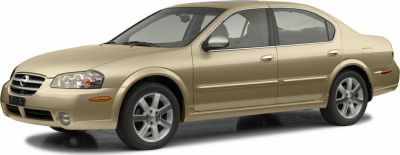
| Production: | 2000-2004 |
|---|---|
| Model Year: | 2000 |
| Length: | 4920 mm193.7 in |
| Width: | 1780 mm70.1 in |
| Height: | 1435 mm56.5 in |
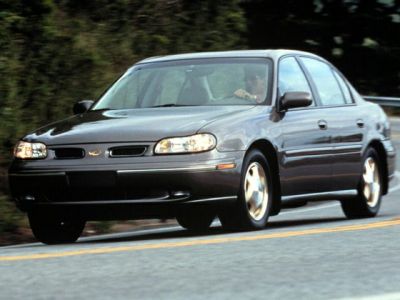
| Production: | 1981-1999 |
|---|---|
| Model Year: | 1982 |
| Length: | 4834-4892 mm190.3-192.6 in |
| Width: | 1766 mm69.5 in |
| Height: | 1375 mm54.1 in |
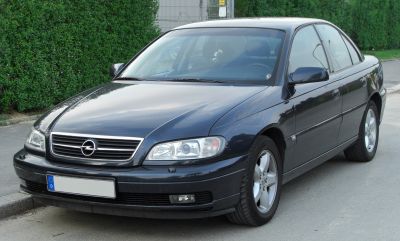
| Production: | 1999-2003 |
|---|---|
| Model Year: | 1999 |
| Length: | 4898 mm192.8 in |
| Width: | 1775-1785 mm69.9-70.3 in |
| Height: | 1455 mm57.3 in |
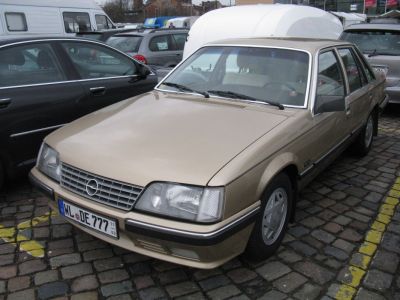
| Production: | 1981-1986 |
|---|---|
| Model Year: | 1982 |
| Length: | 4828-4839 mm190.1-190.5 in |
| Width: | 1722-1728 mm67.8-68.0 in |
| Height: | 1415 mm55.7 in |

| Production: | 2018-2022 |
|---|---|
| Model Year: | 2018 |
| Length: | 4910 mm193.3 in |
| Width: | 1800 mm70.9 in |
| Height: | 1455-1465 mm57.3-57.7 in |

| Production: | 2016-2018 |
|---|---|
| Model Year: | 2016 |
| Length: | 4895 mm192.7 in |
| Width: | 1800 mm70.9 in |
| Height: | 1460-1475 mm57.5-58.1 in |
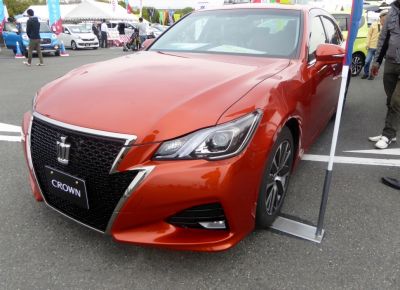
| Production: | 2016-2018 |
|---|---|
| Model Year: | 2016 |
| Length: | 4895 mm192.7 in |
| Width: | 1800 mm70.9 in |
| Height: | 1450-1465 mm57.1-57.7 in |

| Production: | 2012-2015 |
|---|---|
| Model Year: | 2012 |
| Length: | 4895 mm192.7 in |
| Width: | 1800 mm70.9 in |
| Height: | 1460-1475 mm57.5-58.1 in |
